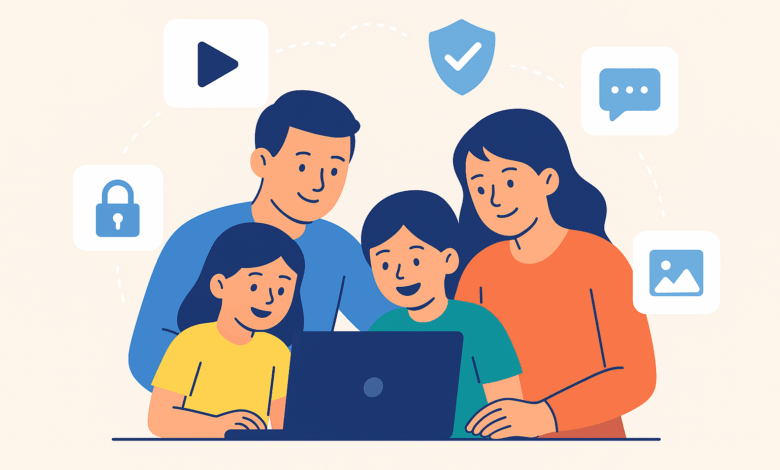Protecting Children from Exposure to Abusive Internet Content

Children nowadays are living in a world surrounded by screens. From educational games and apps to YouTubes and Facebooks, the internet is part of their existence. Though technology opens children up to boundless learning and imagination, it also exposes them to violent web content that stifles their growth, behavior, and health. It is now one of the most important things parents, educators, and society can do to protect children from harm.
The Two-Edged Sword of the Internet
The internet is a two-edged sword — it can learn, entertain, and unite. It can, however, mislead, confuse, and hurt. Most at risk are children because they have not learned yet to think and know what to do and what not to do.
From graphic video content and sex-tinged commercials to misleading facts and cyberbullies, harmful web content can assume an infinite variety of guises. Even apparently harmless sites like video-sharing apps or video games can include objectionable content, subtle chat features, or violence affecting the attitudes and sentiments of children.
Unless restricted, re-exposure to them will have the potential to induce fear, anxiety, hostility, or unrealistic ideas about the world.
Comprehending the Effect on Children
Harmful content on the internet not only harmed kids but also shape their ideas, behavior, and actions towards individuals. It has been confirmed through research that re-exposure to sex material or violence sensitizes young audiences and predisposes them to follow undesirable behavior.
Also, social media will make another person be or look like something they are not, and this can lead to low self-esteem or body dysmorphic problems. The second problem with more cyberbullying is that it adds additional stress to the internet for kids and teenagers, and sometimes it can take years to recover.
On top of all this, excessive screen time can disrupt sleep routines, concentration, and general well-being. These are the kind of effects experienced for many years to come if not addressed early enough.
The Role of Parents and Guardians
Parents are the biggest agents for keeping children away from unwanted digital influences. It does not mean eliminating the technology completely, though — so much as guiding the child towards the intelligent and balanced use.
There are some good practices parents can follow as follows:
- Open Communication — Talk to children openly every now and then about what they are watching on the Internet. Tell them to raise their voices if something bothers them.
- Set Strong Boundaries — Set boundaries around screen time and the appropriate times for internet use.
- Use Parental Controls — Google Family Link, Apple Screen Time, and YouTube Kids block objectionable content.
- Be a Role Model — Kids learn by example. Demonstrate healthy online behavior yourself.
- Teach, Not Just Limit — Educate the children on how to stay safe online, protect their own privacy, and recognize the risky or manipulative content.
By doing these things, parents will make home a safer and more supportive place online.
The Role of Schools and Communities
The significance of digital protection is greatly influenced by school administrations and society. By including digital literacy in school curricula, children can learn how to use the internet responsibly. It is possible for teachers to provide lectures about cyberbullying, web ethics, and the consequences of offending content.
Though governments and civil society can collaborate with technology companies to add more controls and usher the web into a safer environment for kids.

Making a Safe Digital Future
Kids must be shielded against objectionable content with awareness, education, and cooperation. It is not about isolating them from technology but instructing them on how to use it intelligently and protecting them.
Besides guidance from parents, web literacy, and healthy web habits, we can construct the next generation of emotionally well-adjusted, well-educated, and safe in the world of the web. Technology will change, but so too can our capacity to protect and guide children in its midst. Because, ultimately, a safe digital world begins with smart digital parents today.
